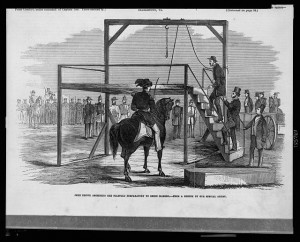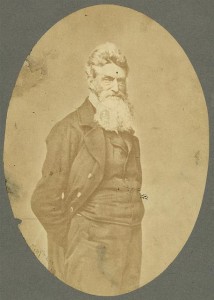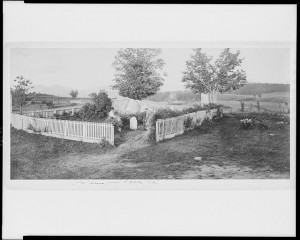Making Pipes from “Sacred Soil”
On July 15, 1861 New York’s 19th Regiment marched with the rest of General Robert Patterson’s Union Army to Bunker Hill, now in West Virginia. Patterson’s army was about 13 miles from Winchester, Virginia, where General Joseph Johnston’s Confederate army was based. The main idea was that Patterson’s army would keep Johnston busy so that Union General McDowell could attach the CSA army under General Beauregard near Manassas Junction.
That did not happen. On the 17th Patterson’s army marched to Charlestown – about 20 miles from Winchester. When the 19th realized they were not going to advance on Johnston’s army, they whispered “Retreat, Retreat”. Johnston was allowed to reinforce Beauregard. On July 21st, when the combined Confederate force eventually routed McDowell at Bull Run, Patterson’s army was marching to Harper’s Ferry. On July 25th General Nathaniel P. Banks replaced Patterson. On July 28th the army moved to Maryland. The 19th encamped in Pleasant Valley for three weeks.

John Brown ascending the scaffold preparatory to being hanged (Frank Leslie's 12-17-1859 LOC - LC-USZ62-132551_
At Charlestown the 19th bivouacked at an historical site. From Cayuga in the Field by Henry Hall and James Hall:
The 19th New York occupied a wheat field south of the village, adjoining that in which John Brown was executed and only a few rods from the very spot where the historical tragedy took place. …
While at this place, the Cayuga volunteers visited the scene of John Brown’s last hours; the court house, with its four white brick pillars, the jail, the church on whose spire the old man’s eyes rested on that bright December day, when he stood upon the fatal scaffold. Everybody secured mementoes. A tree, standing near the scene of execution, was literally carried away piecemeal. A table in the jail, used by Brown, suffered a similar fate. A tenacious clay in the field of the execution, forming an excellent substitute for meerschaum, was carried away in quanties and wrought into capital pipes.
Camp regulations were strictly enforced at Charlestown. No foraging was permitted. The men subsisted on rations of five hard tack, five ounces of salt pork or beef, and coffee.
John Brown was buried in North Elba, New York.




Pingback: Papers, Rock, Scissored | Blue Gray Review